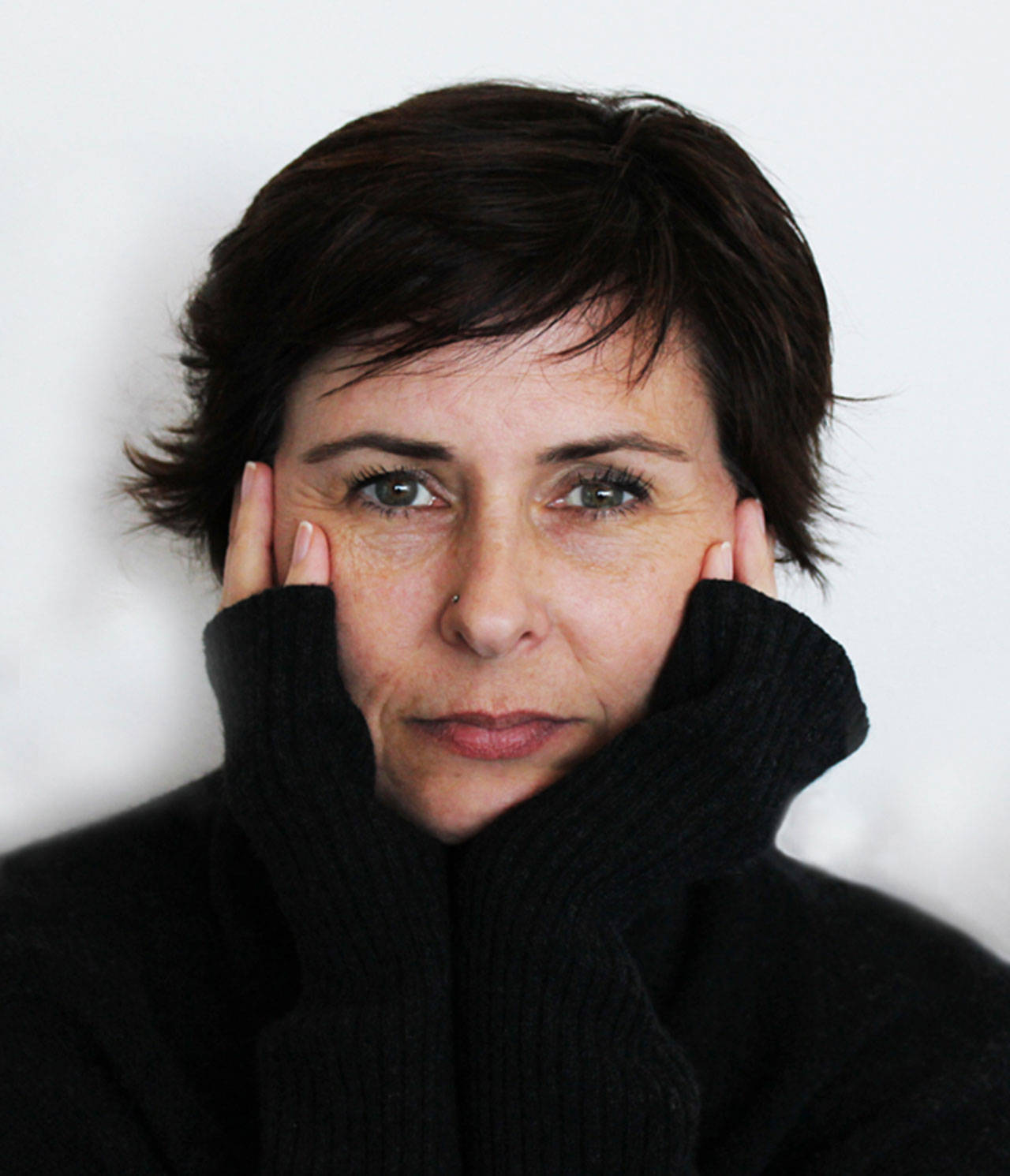The new mixed-media series “State of the Union,” by Seattle-based artist Holly Ballard Martz, is on display at The Art Project (formerly Bainbridge Arts & Crafts) through Sunday, April 29.
From flags to bullet casings to shredded currency, Martz’s series uses found materials that have been put through the wringer to produce exquisitely constructed, wickedly witty, and utterly arresting works that shy away from nothing.
Writing about Mertz’s piece, “Constellation of Transgressions (Bang Bang),” spent primers and encaustic on panel, The Art Project spokeswoman Alex Sanso wrote: “At first glance, and from a short distance, you might smile at the shiny gold sparkles glittering like stars. They form an elegant, cursive script that rests on a rich, black ground like a night sky. But come closer and you’ll notice that the script is formed from hundreds of spent primers — the component of a cartridge that ignites the explosive charge propelling a bullet.”
The words they spell?
Bang Bang.
“[This] is the latest in a series of shows in which Martz has unapologetically — and sometimes with a dark-edged humor — shed light on many of the culturally divisive socio-political topics of our time,” Sanso wrote.
Growing up in Southern California until age 10, then moving to Seattle, Martz has creative expression in her DNA. Her father was a producer of commercials at advertising agency J. Walter Thompson, and her mother a deftly skilled creative maven. She was, Martz said, encouraged to pursue and explore art and creativity.
Although she thought she’d end up on a commercial path with art, like her father, Martz discovered and fell in love with the art of printmaking. She earned a BFA in the subject at the University of Washington, and years later took to painting. After a break in art and printmaking of several years, she found it an easier medium to manage around the chaos of raising a young family. But, in 2011, Martz’s life and art took a dramatic turn, as her daughter was overwhelmed with debilitating depression and anxiety.
Because it was difficult to find people open to talking about mental health issues, Martz said she turned to her art as an outlet for “the grief, regret, and glimmers of hope” that were her daily companions in this new existence for her daughter and herself.
“I am a collector of objects and language,” Martz said. “These phrases and things are already fraught with meanings that I push and shift and combine with other media to say what I need to say. My art expresses my anger, grief, and incredulousness over our damaged world and assuages my personal heartbreak over a child gripped by mental illness.”
In response to Martz’s works, people were more open to speaking about the taboo topic, bringing it out of the shadows. From that point, the artist decided to continue to use her art as a conduit for dialogue around other difficult topics such as gun violence, corruption and immigration — all themes touched upon in this current show.
“Martz’s exquisitely crafted works may elicit a range of responses from awe and admiration to annoyance or anger,” Sanso wrote.
Or, as the artist herself said: “There’s a kind of inverse relationship between the way my art is viewed and the way I work. Someone can immediately respond to color, design, text, or symbol and then unravel heavier, murkier implications.”
For more information, visit www.theartproject.org.



